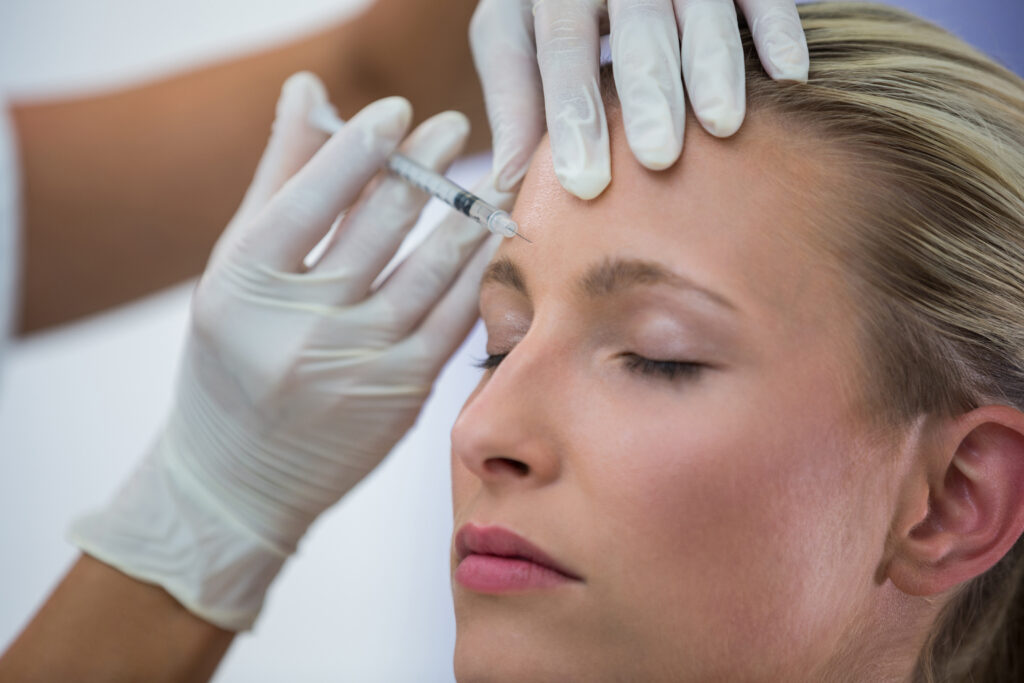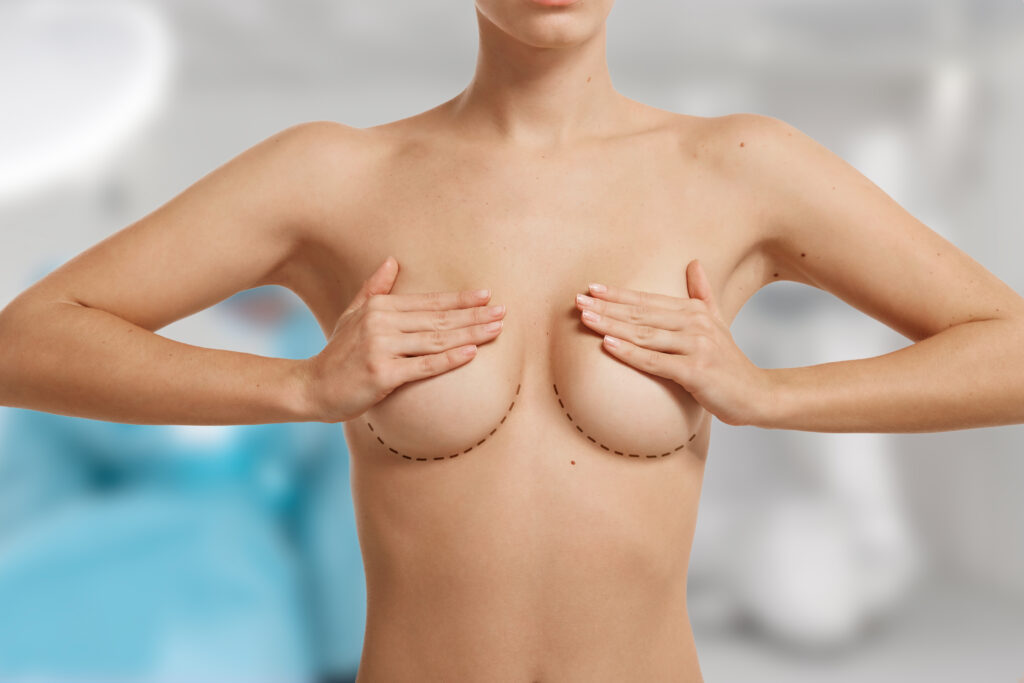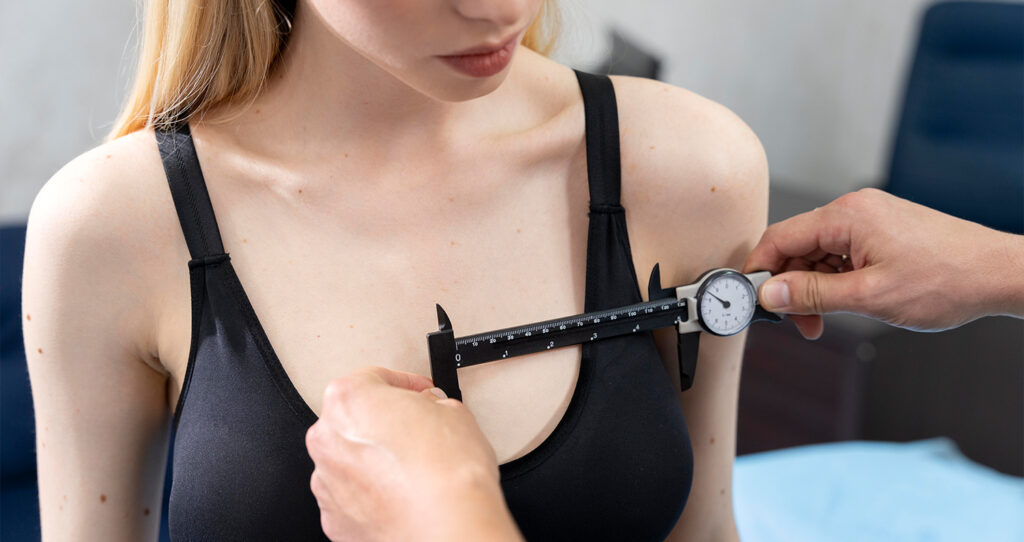Everyone wants to look young, and fresh, however, nobody can fight time. Regardless of your age, you probably have already noticed these unattractive wrinkles on your face. Stress, aging, and the environment reflect on the face.
Luckily, modern medicine has developed many ways how to look younger. The most widespread is face botox. In the United States, the number of procedures reached 4.4 million per year in 2020.
Despite being so widespread, face botox has many myths and misconсeptions around it. We asked an experienced dermatologist Dr. Tatiana Kobets, to guide us through the procedure. Dr. Kobets has been working for 18 years with botulinum toxin and knows everything you need to know about face botox.
What is Botox?
Botox is the most popular trademark of botulinum toxin A. Besides Botox, there are many other trademarks like Dysport, Xeomin, and Jeuveau.
This compound is a neurotoxin that blocks signal transmission between neurons and muscles. As a result, muscle relax and does not contract.
It is used to smooth mimic lines that were formed as a result of facial movements like frowning, squinting, and smiling.
Botulinum toxin is extracted from Clostridium botulinum bacteria that causes botulism. It is possible to get this disease from eating homemade preserved meat, fish, or mushrooms. After a person eats the contaminated food, the organism gets a high amount of toxin that causes mussel paralysis throughout the body. Especially dangerous is the paralysis of breathing muscles.
Luckily, injections for esthetics use only a small amount of toxin, so the treatment is absolutely safe.
Which is better botox or fillers?
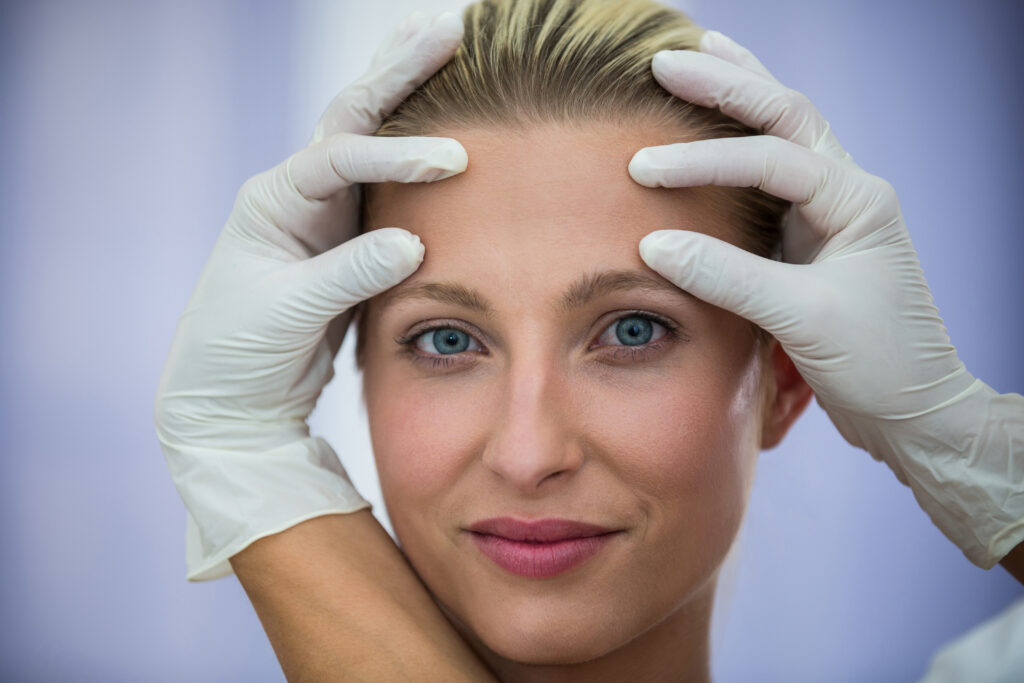
Many people mixed terms like “filler” and “botox”. While both can help to smooth out the skin and reduce wrinkles, there are huge differences between procedures.
The main effect of botox is the stop of the mimic. When some face muscles stop working it prevents the skin from folding and the formation of wrinkles. It also helps with existing lines, because you stop injuring skin with frequent contractions.
Imagine the process like this:
If you sit several times while wearing a coat, you might probably notice several folds on it. However, after you hand into the wardrobe and take it out after one year there will be no folds. The main reason for this is that you stop sitting on the coat.
Takeaway: Botox is not a rejuvenating procedure. It doesn’t help with skin color or tone. Its main function is to remove wrinkles.
Word Filler originates from the word “fill”. The most widespread fillers are based on hyaluronic acid. As we stated earlier it is hard to treat the lower part of the face with botox, so here is where fillers come into play.
Fillers are injected under the skin and smooth it out from the inside. It is used to remove nasolabial folds, and marionette lines. Fillers are used for restoring the volume of the face that makes the patient looks younger. Men and those with deep foreheads or frown lines can also benefit from fillers.
Doctors also use fillers to augment the lips, correct face contour, slightly change the shape of the cheekbones, chin, tip of the nose, and earlobes, and smooth out scars.
Facial botox areas
In fact, there is no certain age to start the face botox treatment, however, there is a defined indication.
If you notice stable wrinkles on the face, schedule a meeting with the cosmetologist. Usually, botox is not enough to fix deep lines, so start as early as possible after you noticed these signs of aging.
Botox face injections are the most common in the upper part of the face. Areas include the forehead, between eyebrows, and near the eyes.
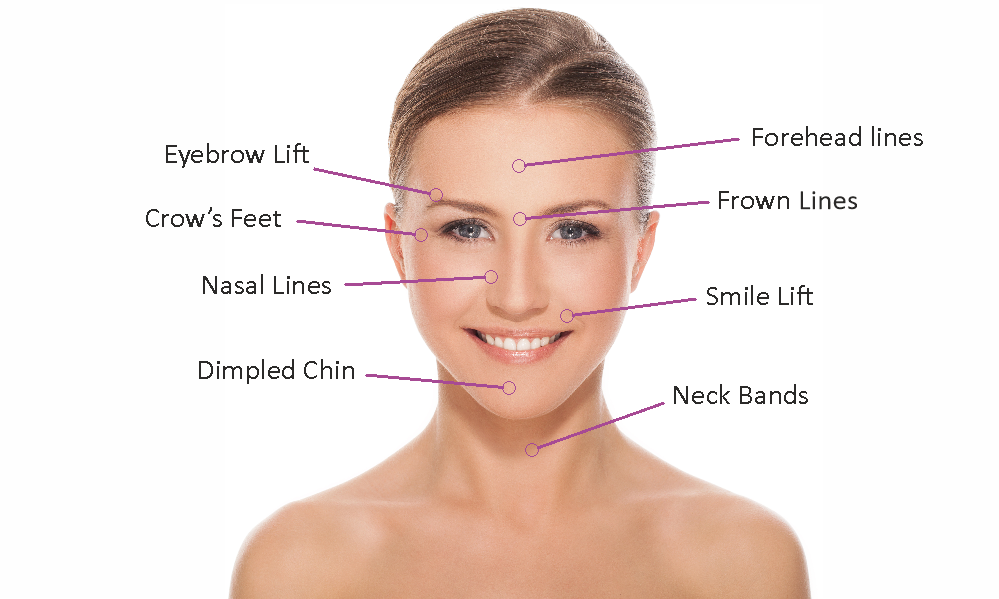
The lower part of the face is harder to treat with Botox. Wrinkles there are caused not only by the mimic but also by the loss of tissue volume. Injection into these parts should be done with high caution and accounting for individual indications.
Depending on the anatomy of the face the exact sides of injections can be different. Specialists divided faces according to shapes, structures, and skin types.
You should understand that even if you have minor wrinkles on one area of the face the doctor will make several injections into certain muscles. The average number of injections are
Frow lines – 3-5 injections;
Forehead – 2-12 injections;
Crow’s lines – 1-6 injections.
You also should plan to treat all areas in one session, because injecting botulinum toxin “too often” results in a decrease in its efficiency.
Face botox contraindication
Luckily botulinum toxin injections have minor contraindications. They are limited to
❌ Pregnancy
❌ Lactation
❌ Lambert–Eaton myasthenic syndrome
❌ Inflammation process in the treatment area
❌ Adverse dermatitis on the treatment site
Do’s and don’ts after botox injection
Do:
There are no specific recommendations on how you should act after the procedure.
On the first day, it is allowed to have mild activities like swimming, yoga, or walking. There are no dietary restrictions too.
Myth: On the web, you can find information that you should stay in a vertical position for hours. This recommendation is old and has no scientific base under it. Modern botulinum toxins are not affected by body position.
Don’t:
- You should avoid applying to the treated zone any lifting, contouring, and anti-aging devices and treatments in the injected area. All of them stimulate muscle activity and blood flow, resulting in reduced effectiveness.
- Don’t drink alcohol up to 48 hours after the procedure.
- Avoid intensive exercising like cardio training for 24-48 hours.
- Avoid any thermal procedures (like a sauna) for a week after the botulinum toxin injections.
- Avoid UV light for a week after the procedure, because it might cause pigmentation changes.
Warning! Side effects of the face botox
Bruises are the most common side effect of botulinum toxin injections. Usually, these are small dots around the places of injections and should disappear in 7-10 days. There are also situations where risks of bruising are higher:
- 1-2 days of the menstruation cycle (count from the start of the period) because blood has lower coagulation potential;
- High blood pressure during the procedure, so the blood will be pushed out from the vessels.
Some patients also notice changes in mimics, that may feel uncomfortable. However, these feelings pass soon, while the positive effect remains.
Sometimes patients had a mild headache, that will pass in several days.
Mild side effects are rare. They include dropped or swollen eyelids and dropped eyebrows. It is usually because of the wrong injection procedure when the specialist doesn’t take into account individual anatomy features.
Common myths about face botox
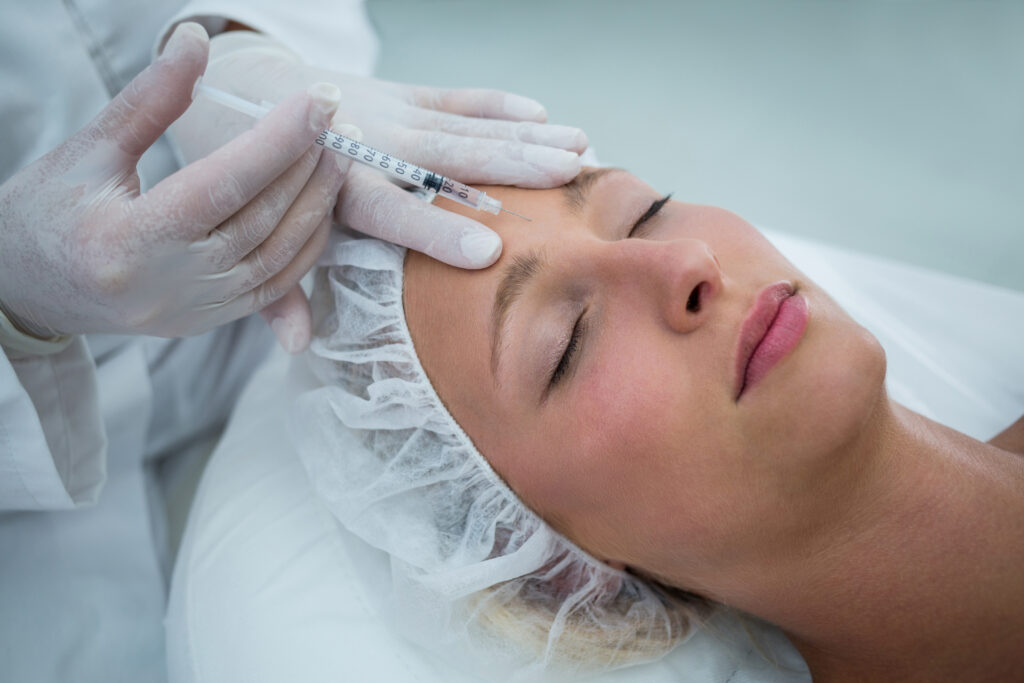
Myth 1: Botox will make me older after wearing off
This is false. In fact, after the effect of the botox disappears your muscle still can’t work at 100%. As a result, the wrinkles won’t form even after 1,5-3 months after botox wears off.
You might have the feeling of getting older because botulinum toxin removes wrinkles. After wearing off you will start using muscles again and it will result in the formation of wrinkles.
Another case is when a person has been getting botulinum toxin injections for 10-15 years. The procedure does not stop aging, it just prevents deep wrinkles formation. So after the person stops doing botulinum toxin injections all signs of aging get more prominent and wrinkles form faster because of the changes in the skin structure. It also makes the client feel older.
Myth 2: Facial botox will cause muscle atrophy
In fact, it won’t. If you don’t aim to have a face mask all the time, the activity of the muscles will return with time and muscles will restore the previous strength.
Myth 3: I will get addicted to the botox
Only if you want to keep the desired results all the time. Botulinum toxin injection gives only temporary results that last up to 6 months. It is somewhat similar to addiction, however, it is not the one.
Botulinum toxin has no influence on the brain region connected with addiction and acts only in the injected zone. So will get neither physical nor psychological addiction from the treatment.
Myth 4: I will have a face mask and won’t be able to express my emotions
It mostly depends on your request. If you want to save the ability to move your face, then the doctor will apply fewer doses, however, the action time of botulinum toxin will be reduced.
You might feel a little unusual because you won’t be able to act as previously, but the final mobility depends on your request and the face anatomy.
“Patients need to understand that it is impossible to remove all wrinkles and save face mobility. If muscles can move, some wrinkles will remain. ”
– says Dr. Kobets.
Summary
Face botox is the most common esthetic procedure in the world. During the procedure, small amounts of botulinum toxin are injected into the facial muscles to block their activity. It prevents the formation of new wrinkles and removes existing lines too.
You can treat almost all areas with botulinum toxin, including the forehead, “elevens”, chin, and lines around the eyes, and mouth. However, the lower part of the face is more tricky, because of the tissue loss that contributes to the wrinkles formation there.
Botulinum toxin is a completely safe treatment with limited side effects and restrictions after the procedure. However, despite its widespread, there are many myths about face botox regarding addiction, muscle atrophy, aging, and face mask.
FAQ
😌 Is face botox safe?
Absolutely. Doses of botulinum toxin that are used in esthetic medicine are too small to cause any harm.
⏰ How long does face botox last?
The results last for 3-6 months after the injection. It depends on the applied doses and individual features.
😏 Is it possible to extend face Botox effects?
Not really. There are some data that Zinc can prolong the effect, but this fact has a poor evidence base.
🤕 Is face botox painful?
It depends on your pain threshold. Most people describe it as mosquito bites. In most areas there is no need to apply any anesthetic cream, however the area around the mouth is the most sensitive, so you might ask a doctor to use it if you plan to treat this area.

